You searched for: 圣卢西亚谷歌排名【TG飞机:@bapingseo】INS,FACEBOOK竞价粉【TG电报:@bapingseo】谷歌是競價排名嗎【Telegram:@bapingseo】哪里有英雄联盟比赛输赢竞猜韦德初盘怎么看大小球意甲外围网站足球特1特2是什么意思?1SggWD/B5tngv.html
<< Previous | Displaying results 801-850 of 854 for "圣卢西亚谷歌排名【TG飞机:@bapingseo】INS,FACEBOOK竞价粉【TG电报:@bapingseo】谷歌是競價排名嗎【Telegram:@bapingseo】哪里有英雄联盟比赛输赢竞猜韦德初盘怎么看大小球意甲外围网站足球特1特2是什么意思?1SggWD/B5tngv.html" | Next >>
-
Abraham Bergman
ID CardAbraham was born to a Jewish family in Krasnik, a town in the Lublin district of Poland. The town had a large Jewish population. Abraham's father was a tailor. When Abraham was 2, his mother died and he was raised by his grandmother. At the age of 7, Abraham started public school. 1933-39: Abraham liked school but found it difficult. The Christian children often yelled at the Jews, "You killed our God." One year, on the day before Christmas break, some kids brought ropes tied to iron weights to school.…

-
Walter Szczeniak
ID CardWalter was the oldest of eight children born to Polish-Catholic immigrant parents in a town near Boston, Massachusetts. The family moved back to Poland when Walter was a child, and lived on a family farm near Ostroleka in northern Poland that Walter's mother had inherited. Because his father's American nickname was "Stetson," Walter was mistakenly registered as "Charles Stetson" on his American birth certificate. 1933-39: After Walter completed secondary school, his father sent him to the University of…

-
Elias (Elya) Grosmann
ID CardElias was born in a small town in the hill country of northeastern Slovakia. His family was Jewish, and he grew up in a religious home in which both Yiddish and Hungarian were spoken. His father was a peddler and his mother ran a small general store. Besides attending public schools, Elias received a formal Jewish education and attended Medzilaborce's rabbinical academy. 1933-39: The townspeople were mostly Jewish and worried about Nazi Germany. The German annexation of Austria in March 1938 alarmed them.…
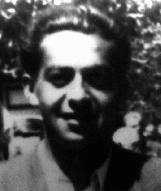
-
Elsa (Eliska) Skutezka Kulkova
ID CardElsa was the eldest of three children born to Jewish parents in Brno, the capital of Moravia, where her father ran a successful shipping company. In 1920 she graduated from a German-language secondary school. She married and moved to Bratislava, but the marriage was unsuccessful and Elsa returned to Brno in 1926, where she opened a millinery business. 1933-39: On May 24, 1933, Elsa married Robert Kulka and the couple settled in Robert's hometown of Olomouc. Their son, Tomas, was born a year and a day…
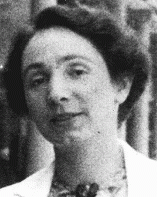
-
Lidia Lebowitz
ID CardThe younger of two sisters, Lidia was born to Jewish parents living in Sarospatak, a small town in northeastern Hungary. Lidia's parents owned a successful dry goods business. At the time, ready-made clothes were still rare in the countryside. Townspeople and local farmers would purchase fabric at the Lebowitz store and then take it to their tailor or seamstress to be sewn into clothes. 1933-39: Lidia was 2 when her Aunt Sadie, who had immigrated to the United States many years earlier, came to visit…
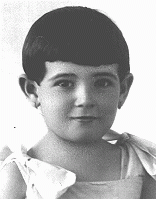
-
Ema Schwarzova Skutezka
ID CardOne of two children born to religious Jewish parents, Ema was raised in the small Moravian town of Lomnice, where her mother ran a general store. In 1901 Ema married Eduard Skutecky, a regular customer at her mother's store. The couple settled in the city of Brno, where they raised three children. Eduard ran a shipping company. 1933-39: By 1933 Ema's three children were grown and had moved out. Four years later her husband passed away, and Ema moved in with her eldest daughter, Elsa. Elsa and her husband…

-
Siegfried Wohlfarth
ID CardThe elder of two sons of religious German-Jewish parents, Siegfried grew up in the city of Frankfurt. Upon completing his education, he became a certified public accountant in Frankfurt. In his free time he worked as a freelance music critic. While on a vacation in 1932 on the North Sea island of Norderney, he met Herta Katz, a young woman with whom he quickly fell in love. 1933-39: The Nazis had fired Siegfried from his government job because he was Jewish. Although his mother opposed the match,…

-
Karl Gorath
ID CardKarl was born in the small town of Bad Zwishenahn in northern Germany. When he was 2, his family moved to the port of Bremerhaven. His father was a sailor and his mother became a nurse in a local hospital. After his father died, Karl continued to live with his mother. Karl was 20 when he began training as a deacon at his parish church. 1933-39: Karl was 26 when his jealous lover denounced him and he was arrested at his house under paragraph 175 of the criminal code, which defined homosexuality as an…
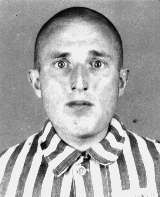
-
Franz Wohlfahrt
ID CardThe eldest of six children born to Catholic parents, Franz was raised in a village in the part of Austria known as Carinthia. His father was a farmer and quarryman. Disillusioned with Catholicism, his parents became Jehovah's Witnesses during Franz's childhood and raised their children in their new faith. As a teenager, Franz was interested in painting and skiing. 1933-39: Franz was apprenticed to be a house painter and decorator. After Nazi Germany annexed Austria in 1938, like other Jehovah's…
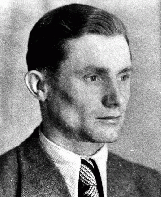
-
Renee Schwalb
ID CardVienna, home to some 175,000 Jews before World War II, was a major center of European Jewry. Vienna was also the intellectual heart of the Palestine resettlement movement. Most of the city's Jews lived in two large districts on the east side of the Danube Canal. Renee's father owned a prosperous men's clothing store in the city. 1933-39: German forces occupied Austria in March 1938. Anti-Jewish measures were quickly imposed. Renee's father was prohibited from doing business and his store was seized. He…
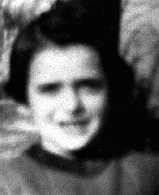
-
Frida Adler
ID CardFrida was the eldest of three daughters born to Jewish parents in a village in the easternmost province of Czechoslovakia. When Frida was 2, her parents moved to Liege, Belgium, a largely Catholic industrial city with many immigrants from eastern Europe. Frida attended Belgian public schools and grew up speaking French. 1933-39: In Liege Frida's family lived in an apartment above a cafe and across the street from a Catholic church. Frida had many Catholic girlfriends at school. At home she spoke Yiddish…
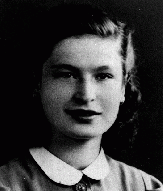
-
Lucien-Louis Bunel
ID CardLucien was the fourth of eight children born to poor Catholic parents in a small town in northwestern France. Lucien began his seminary studies in nearby Rouen at the age of 12. Following two years of military service, he resumed his religious studies in 1922 and was ordained as a priest three years later. He joined the Carmelite religious order in 1931, and became Father Jacques. 1933-39: In 1934 Father Jacques moved to the town of Avon, where he established a boys' school,…

-
Morris Zaidband
ID CardMorris was one of five children born to a Jewish family in the Polish town of Oswiecim, 33 miles west of Cracow [Krakow]. Morris' father sold ladies' undergarments. Morris worked as a jeweler. 1933-39: In September 1939 Germany invaded Poland. Morris's family started to flee eastward but two weeks later the Germans overtook them and they were sent home. When they returned, the Germans were already beating Jews who didn't show them "respect." One day, when German guards came to their house to deport…
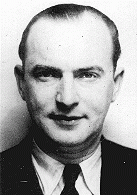
-
Yakov Biber
ID CardYakov was the youngest of four children born to a poor religious Jewish family in the village of Matsiov in Ukraine. Six years after Yakov was born, Matsiov was ceded to Poland. When Yakov was 14 his mother died and he had to quit school in order to work. Yakov was a Zionist and hoped to settle in Palestine [Yishuv]. 1933-39: In the Young Pioneers, a Zionist group, Yakov directed the dramatic productions the group put on to raise money for the Zionist cause. It was in the Young Pioneers that he met Chava,…
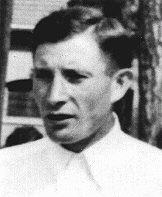
-
Manon Marliac
ID CardManon's Christian parents lived in Paris. Roger Marliac, her father, originally from a wealthy family, supported his family by selling produce at small marketplaces. Margarit, her mother (called Maguy by her friends), had a university degree in science. The family lived in a large apartment in a fashionable neighborhood near the Eiffel Tower. 1933-39: Manon, the Marliacs' second child, was born in 1937. She was 2 years old when her father was drafted into the French army as the country mobilized for a…

-
Selma Schwarzwald
ID CardBoth of Selma's Jewish parents, Daniel Schwarzwald and Laura Litwak, had been raised in the industrial city of Lvov. As many different nationalities lived in Lvov, Selma's mother and father could speak many languages--Polish, Russian, German and Yiddish. In running his successful lumber business, Daniel also occasionally used English. 1933-39: Selma's parents married in April 1935 and she was born two years later. Her father was afraid that there might be a war and wanted to move the family to safety in…
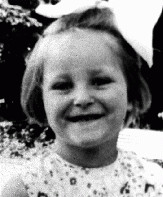
-
Leopold Page describes meeting German industrialist Oskar Schindler
Oral HistoryLeopold was a teacher in Krakow, Poland, when World War II began in 1939. While serving in the Polish army, he was captured by Germans. Leopold escaped from a prisoner-of-war transport. Soon after, he met the German industrialist Oskar Schindler. The two became friends. Leopold was forced to live in the Krakow ghetto. He later worked in Schindler's factory in Bruennlitz. He and the other Jews who worked there were treated relatively well and protected from the Nazis. After the war, Leopold moved to the…

-
Elie Wiesel Timeline and World Events: 1928–1951
ArticleSurvivor Elie Wiesel devoted his life to educating the world about the Holocaust. Learn about key events in the world and his life from 1928–1951.

-
Elie Wiesel Timeline and World Events: From 1952
ArticleSurvivor Elie Wiesel devoted his life to educating the world about the Holocaust. Explore key events in the world and his life from 1952 until his death in 2016.
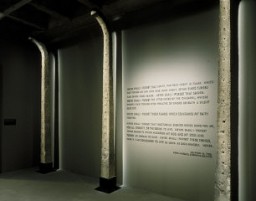
-
Hainewalde
ArticleThe SA established a protective custody camp at Hainewalde in March 1933. Well-known journalist and writer Axel Eggebrecht was among its early prisoners.
-
Testimony on the Escape from the Mir Ghetto by Eliezer Breslin
ArticleRead a summary extract from Eliezer Breslin’s testimony on escaping from the Mir ghetto, given during the WWII war crimes investigation into Semion Serafinowicz.
-
Stephen S. Wise
ArticleStephen Wise (1874–1949) was a prominent Jewish leader in the United States between 1933-1945. Learn more about his work during the Holocaust.

-
SS: Decline, Disintegration, and Trials
ArticleIn 1945, the power and influence of the SS in Nazi Germany started to decline. Learn more about the subsequent disintegration and postwar trials.

-
Le Chambon-sur-Lignon
ArticleFrom 1940 to 1944, Le Chambon-sur-Lignon and neighboring villages provided shelter to some 5,000 people, among them Jews fleeing persecution.

-
Adolf Hitler: 1919-1924
ArticleAdolf Hitler established himself as absolute Führer, or leader, of the Nazi Party by 1921. Learn more about Hitler in the years 1919-1924.

-
Ardeatine Caves Massacre
ArticleNow a national memorial site, the Ardeatine Caves outside Rome were the site of a German reprisal for a bombing by Italian resistance operatives in March 1944.
-
Jewish Aid and Rescue
ArticleJewish groups worldwide helped rescue thousands during the Holocaust. Read more about efforts to save Jews from Nazi persecution and death.
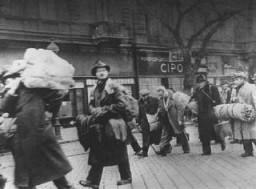
-
Blood Libel
ArticleBlood libels were false allegations that Jews used the blood of non-Jewish children in rituals. Nazi propagandists used this false charge in their antisemitic propaganda.

-
War Refugee Board: Activities
ArticleThe War Refugee Board was a significant US attempt to rescue and relieve Jews and other endangered people under German occupation. Learn about its activities.

-
Jacob Wiener
ArticleExplore Jacob Wiener’s biography and learn about his experiences during Kristallnacht in Würzburg, Germany.

-
Manya Moszkowicz
ID CardManya was born in Chmielnik, a small Polish town that had a Jewish community dating back to the 16th century. Her father owned a furniture shop and her mother took care of the home. Manya had two younger brothers, David and Mordechai, and was surrounded by many close relatives. She attended both public and Hebrew schools and had many friends. 1933–39: In 1938 Manya's family moved to Sosnowiec, a larger city located near the German border. There she had her first experience with antisemitism. Signs…
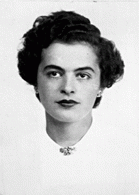
-
Gerd Jacob Zwienicki
ID CardGerd was the eldest of four children. His father, Josef, had left Ukraine in 1913 and opened a bicycle sales and repair shop in Bremen. His mother, Selma, was descended from a distinguished Jewish family and had been a kindergarten teacher and a bookkeeper for a large firm. As a child, Gerd experienced the hardships of the Depression and witnessed the violent street fights between the Nazis and their political opponents, the Communists and Socialists. 1933–39: When the Nazis came to power in 1933, Gerd…
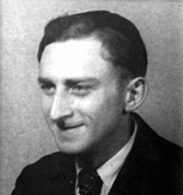
-
Leon Rupnik
ArticleDuring World War II, Slovene general Leon Rupnik collaborated with the forces of Fascist Italy and Nazi Germany. Rupnik was appointed president of the Provincial Government of the German-occupied Province of Ljubljana in 1943. He was convicted of treason and executed in 1946. In 2020, his sentence was annulled on a technicality.
-
Chelmno
ArticleThe Chelmno killing center was the first stationary facility where poison gas was used for mass murder of Jews. Killing operations began there in December 1941.

-
Italy
ArticleItaly was home to one of the oldest Jewish communities in Europe. It was also a member of the Axis alliance with Nazi Germany. Learn about Italy during WWII and the Holocaust.

-
Charlene Schiff describes conditions in the Horochow ghetto
Oral HistoryBoth of Charlene's parents were local Jewish community leaders, and the family was active in community life. Charlene's father was a professor of philosophy at the State University of Lvov. World War II began with the German invasion of Poland on September 1, 1939. Charlene's town was in the part of eastern Poland occupied by the Soviet Union under the German-Soviet Pact of August 1939. Under the Soviet occupation, the family remained in its home and Charlene's father continued to teach. The Germans…
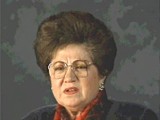
-
Charlene Schiff describes anti-Jewish decrees and anti-Jewish measures after the German invasion of Horochow
Oral HistoryBoth of Charlene's parents were local Jewish community leaders, and the family was active in community life. Charlene's father was a professor of philosophy at the State University of Lvov. World War II began with the German invasion of Poland on September 1, 1939. Charlene's town was in the part of eastern Poland occupied by the Soviet Union under the German-Soviet Pact of August 1939. Under the Soviet occupation, the family remained in its home and Charlene's father continued to teach. The Germans…
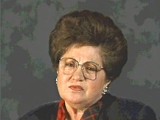
-
Felix Horn describes a hiding place in Warsaw
Oral HistoryFelix was born to an assimilated Jewish family in Lublin, Poland. His father was a locksmith and his mother was a singer. Following the German invasion of Poland on September 1, 1939, Felix fled east to Rovno and then to Soviet-occupied Lvov, where he was accepted at a medical school. After the German invasion of the Soviet Union in June 1941, Felix was taken to a labor camp. He escaped and returned to Lublin, and found that his family had been forced into the ghetto established there. After the…

-
Felix Horn describes escaping from the Majdan Tatarski ghetto and seeking shelter
Oral HistoryFelix was born to an assimilated Jewish family in Lublin, Poland. His father was a locksmith and his mother was a singer. Following the German invasion of Poland on September 1, 1939, Felix fled east to Rovno and then to Soviet-occupied Lvov, where he was accepted at a medical school. After the German invasion of the Soviet Union in June 1941, Felix was taken to a labor camp. He escaped and returned to Lublin, and found that his family had been forced into the ghetto established there. After the…

-

-
Nazi Territorial Aggression: The Anschluss
ArticleThe Anschluss, Germany's annexation of Austria in March 1938, was the Nazi German regime’s first act of territorial aggression and expansion. Learn more.
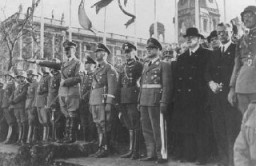
-
What Groups of People did the Nazis Target?
ArticleJews were the primary targets for mass murder by the Nazis and their collaborators. Nazi policies also led to the brutalization and persecution of millions of others.
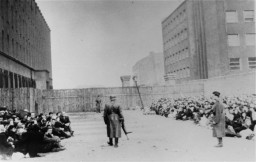
-
Isadore Helfing describes labor in the Treblinka camp
Oral HistoryIsadore was born to a Jewish family in Kielce, Poland. Germany invaded Poland in September 1939. Isadore and his family were forced into the Kielce ghetto, which was established in April 1941. When his parents were deported to the Treblinka killing center in 1942, Isadore went with them rather than remaining behind for forced labor. After arrival at the camp, Isadore hid in a pile of bodies. His parents were killed. Isadore survived by working in the camp. On August 2, 1943, prisoners at Treblinka revolted…
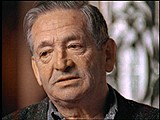
-
Mlynów: "Life under the German Occupation," According to Yehudit Rudolf
ArticleExplore firsthand testimony about the occupation of Mlynów, the establishment of the ghetto, resistance activities, and the destruction of the ghetto.
-
Treblinka
ArticleTreblinka was one of three killing centers in Operation Reinhard, the SS plan to murder almost two million Jews living in the German-administered territory of occupied Poland.

-
Assessing Guilt
ArticleAfter WWII, prosecutors faced the challenge of assessing the guilt of propagandists whose words, images, and writings had supported Nazi brutality and mass murder.
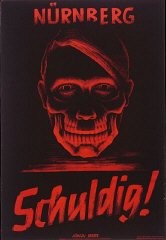
-
Charlene Schiff describes escaping from the Horochow ghetto
Oral HistoryBoth of Charlene's parents were local Jewish community leaders, and the family was active in community life. Charlene's father was a professor of philosophy at the State University of Lvov. World War II began with the German invasion of Poland on September 1, 1939. Charlene's town was in the part of eastern Poland occupied by the Soviet Union under the German-Soviet Pact of August 1939. Under the Soviet occupation, the family remained in its home and Charlene's father continued to teach. The Germans…
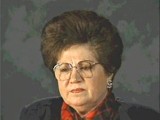
-
How did postwar trials shape approaches to international justice?
Discussion QuestionThe aftermath of the Holocaust raised questions about the search for justice in the wake of mass atrocity and genocide. The World War II Allied powers provided a major, highly public model for establishing internati...

-
Gay Men under the Nazi Regime
ArticleThe Nazi regime carried out a campaign against male homosexuality and persecuted gay men between 1933 and 1945.
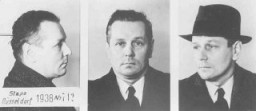
-
Josef Mengele
ArticleProminent SS physician Josef Mengele, called the "angel of death" by his victims, conducted inhumane medical experiments on prisoners in the Auschwitz camp.

